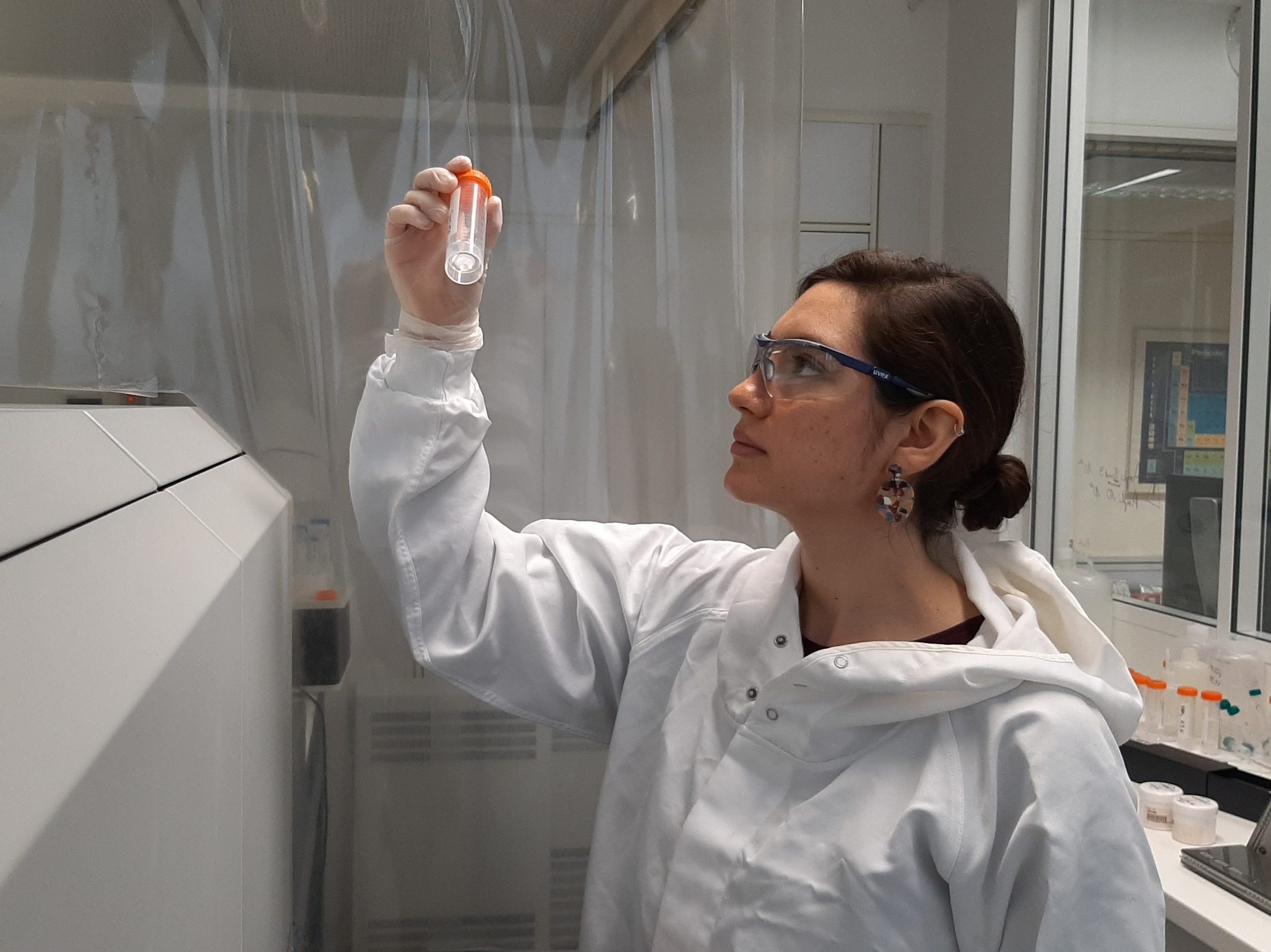MYSTHIC: “We still have a lot to learn about deep Earth carbon cycle”
For more than a year, Javiera Villalobos Orchard has been working as a postdoc geochemist on the LabEx-funded MYSTHIC project at IPGP. Here, she tells us more about her work and her background.

“I was always curious the Earth”. Javiera’s interests about Earth and nature come from her country of origin: Chile. Growing up in Santiago, with the neighbouring Andes near by, Javiera has always been surrounded by a lot of mountains, volcanoes or earthquakes.
At 15, she decides she would become a geologist, and focus her education in the study of the Earth. So after high school, she joins the Faculty of Physical and Mathematical Sciences of the University of Chile. She studies geology for 4 years, during which she also moves for a few months in the UK, during her internship in the University of Manchester. There, she has a fist experience in the field of geochemistry. She also meets her future PhD supervisor.
After a year back in Chile, Javiera then returns in Manchester in 2016 for her PhD, thanks to funding from the National Agency for Research and Development (ANID) – CHILE Doctoral Scholarship Program.
Her PhD research focuses on the study of molybdenum (Mo) isotopes variations in magmatic rocks from diverse high-temperature geological settings, such as subduction zones. Indeed, Mo isotopes may constitute an interesting tracer for following geological mass transfer processes. In order to better understand the role of Mo isotope in such high-temperature systems, Javiera has to carry out numerous chemical operations and analysis on different samples relevant to different scales of geological processes. This lead her to collaborate with different research laboratories, notably within the University of Bristol, University of Cambridge and University of Göttingen.
Like a lot of researchers, Javiera’s researches was impacted by Covid-19. She notes “I couldn’t do lab work during lockdown, so a lot of my work couldn’t be publish.” It nonetheless did not prevent her to successfully completing her PhD, and then starts a postdoc in IPGP in summer 2020. “It has been challenging to finish my PhD, find a postdoc and move in Paris during a global pandemic.”
Javiera now works on the MYSTHIC program, a LabEx UnivEarthS funded project aiming to better understand the role and processes of geological carbon storage within the Earth’s carbon cycle. Indeed, most of the Earth’s carbon is stored inertly in the earth’s lithosphere.
But the geologic component of the carbon cycle operates slowly in comparison to the other parts of the global carbon cycle. It is one of the most important determinants of the amount of carbon in the atmosphere, and thus of global temperatures. « It was also not very well known » Javiera adds.
The Himalaya is a unique, active natural laboratory to study carbon fluxes and emissions associated with mountain formation. At the frontier between petrology, geochemistry and geomicrobiology, MYSTHIC aims at evaluating the storage and mobility of carbon and its impact on endoterrestrial biological activity and carbon emissions, linking current processes to unconstrained (bio)geochemical cycles through geological times.
